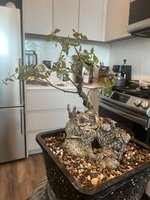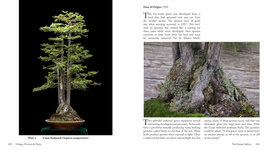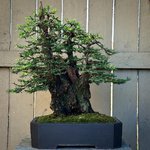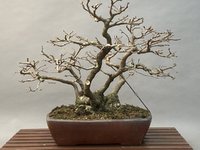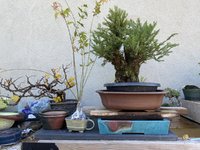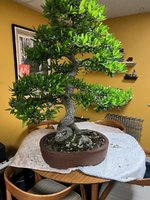electraus
Mame
Hello everyone,
A friend and I challenged each other to design a tree in a style we have never worked with before. I chose a (very normal and common) cascade style juniper or pine for him meanwhile he chose a burl style for me Before this, I didn’t even know what a burl style was and in all honesty I still don’t have the best understanding. I reached out to Bob shimon asking if he had anything like this available and he showed me this coast live oak.
I have no idea how to proceed with this monstrosity and I can’t find inspiration pics online. I wired the “trunk” of the tree to better position it in relation to the Burl but quickly realized I have absolutely no idea what I’m doing. What is next step of the process with this tree? Do I need to let the trunk thicken to become more proportional to the Burl? I have no clue what this tree is even supposed to look like when finished. Any help/inspiration pics would be greatly appreciated. Thanks in advance!
A friend and I challenged each other to design a tree in a style we have never worked with before. I chose a (very normal and common) cascade style juniper or pine for him meanwhile he chose a burl style for me Before this, I didn’t even know what a burl style was and in all honesty I still don’t have the best understanding. I reached out to Bob shimon asking if he had anything like this available and he showed me this coast live oak.
I have no idea how to proceed with this monstrosity and I can’t find inspiration pics online. I wired the “trunk” of the tree to better position it in relation to the Burl but quickly realized I have absolutely no idea what I’m doing. What is next step of the process with this tree? Do I need to let the trunk thicken to become more proportional to the Burl? I have no clue what this tree is even supposed to look like when finished. Any help/inspiration pics would be greatly appreciated. Thanks in advance!

